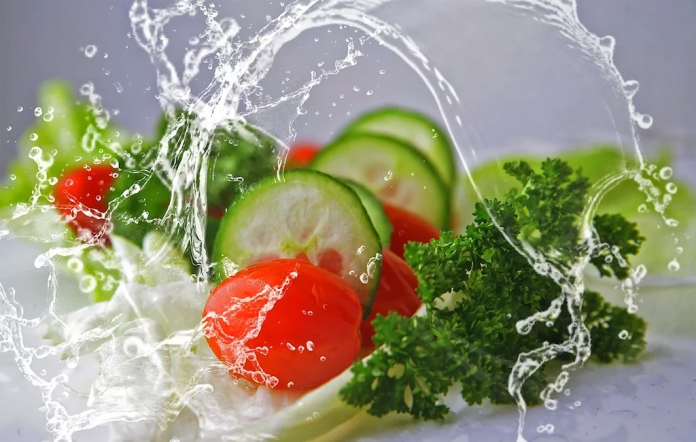Everyone wants to have a healthy and fit body. It takes effort and is not easy to have a healthy and fit body. In addition to adopting a healthy lifestyle, you also need to be good at choosing good vegetables because high-quality vegetables are very beneficial for your health.
You should eat more foods that
contain vitamins and healthy nutrients, such as ayuran, if you want to stay
healthy and fit.
How
to Choose Fresh and High-Quality Vegetables
Choosing healthy and fresh
vegetables is very important. You don't need to worry anymore because some of
the following suggestions will help you choose the right vegetables:
1.
Pay attention to the color of vegetables
The color of the vegetable is
the first thing you will notice when you choose it. A good vegetable is one
that still has a bright or original color. Because vegetables that change color
indicate that they are no longer fresh, In addition, its nutrient and vitamin
content may have been reduced.
One example of vegetables that
change color is carrots and potatoes that are green at the base and green
leaves that begin to turn yellow.
2.
Leafy vegetables do not wither
An easy way to tell if
vegetables are still good or not is to look at their color and freshness. Leafy
vegetables that are still good, such as spinach, kale, lettuce, and mustard,
usually have a tough texture and a fresh green color. Poor vegetables wither
and change color.
Fresh vegetables are usually
freshly harvested and have not traveled far.
3.
Pesticide-free vegetables
The best way to choose
vegetables is not always easy and whole.
Small caterpillars inside
vegetables usually eat their leaves, causing the leaves to become incomplete
and imperfect. However, it turns out that it is good for your health.
Caterpillars can eat vegetable leaves, which indicates that vegetables do not
have pesticides. Therefore, when choosing vegetables, make sure that the leaves
are not whole or perforated.
4.
Uncleaned vegetables
Another way to choose good,
fresh vegetables is to look for vegetables that are still rooted and have not
been washed by the merchant. This is due to the fact that vegetables that have
not been cleaned are fresher and not prone to wilting or rotting. In addition,
the water content in it remains stable.
5.
Vegetables do not wrinkle
When you buy root vegetables
such as onions, potatoes, carrots, sweet potatoes, and bengkoang, pay attention
to whether they are mushy, bruised, sprouted, or hard.
Choose root vegetables that are
still hard-textured and have a fresh fragrance. For example, fresh garlic does
not sprout, does not wrinkle, and does not have a yellowish color.
6.
Not mushy and smelly
Choose fruit vegetables such as
eggplants, cucumbers, peppers, tomatoes, and others carefully. How is the
process?
The best way to choose
vegetables is to see how they look. If the fruit cracks, rips, mushy, watery,
moldy, or smells, then the vegetable is unfit for consumption.
7.
Shop for vegetables at the farmer's market
How to choose good vegetables in
the supermarket is obviously feasible, but since they are cheaper, shopping at
the farmer's market is more profitable and financially rewarding.
Shopping for vegetables at
farmers markets is also safer because they have just been harvested from the
fields. Another advantage, vegetables that you can eat right away, last longer
to rot.
8.
Shop for vegetables in the morning
To choose the next good
vegetable, you need to get up early. Vegetable sellers usually do this to get
fresh vegetables.
Buying vegetables in the morning
is not only still fresh, but also makes it easier to find ones that are
complete or have not run out. This must be fun, right?
9.
Choose organic vegetables
Since organic vegetables are not
contaminated with pesticides that can harm your health, eating organic
vegetables is definitely healthy. How can we choose organic vegetables?
- Caterpillars usually make organic
vegetables perforated.
- The color of organic vegetables is
brighter than that of non-organic vegetables.
- There are no white patches or pesticides
on the surface of the vegetable.
- Most supermarkets sell organic vegetables
with stickers or seals indicating that they are organic and certified.
- You can ask directly about the quality of
vegetables when buying directly from farmers or traditional markets.
Tips
for Storing Vegetables Properly
In addition to choosing
vegetables that are of high quality, it is also important to store them
properly, as stated below:
1.
Before storing in the
refrigerator, first clean and wash the vegetables from yellowed roots, soil and
leaves.
2.
Choose the right vegetable
container, such as paper or plastic.
3.
Do not store fruits and
vegetables in the same place. During the ripening process, greens may turn
yellow if mixed with fruit.
4.
Raw meat, poultry and fish
should be separated from fresh vegetables.
5.
Pieces of fruit and vegetables
should be stored in sealed plastic bags or refrigerator containers should be
cleaned regularly.
6.
Fresh vegetables and fruits that
require ripening should be stored at room temperature.
Once you know how to choose good
vegetables, you will be able to tell the difference between fresh vegetables
and not. Hopefully useful, healthy friends!

Post a Comment for "How to Choose Fresh and Healthy Vegetables"